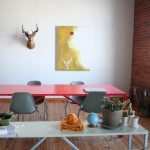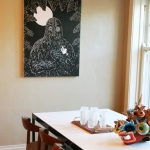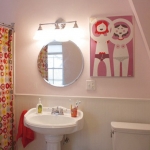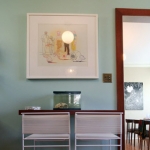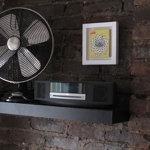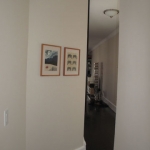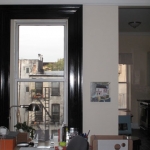We have a tendency in the blogosphere to get so caught up in uncovering the latest and greatest that we sometimes fail to adequately address the fundamentals. In the spirit of avoiding this pitfall, I’m going back to the basics in this post, specifically addressing the question of where to look for art.
There is both good and bad news when it comes to looking for art. The bad news is that there is no catch-all marketplace, no amazon.com or itunes. (You can argue this is actually a good thing, too.) Instead the art market is extremely fragmented and most art purveyors, both online and brick-and-mortar, have little visibility beyond their immediate community. Plus, because not everyone is interested in art, you can’t simply ask your neighbors where they bought their art (unless you have really cool, artsy neighbors!). Therefore, finding good resources on art can be difficult and time-consuming. The good news is that there is no lack of amazing resources on art for you to tap into. The hurdle is simply knowing where to look.
I’ve compiled my best resources for researching and buying art by category:
1. Online marketplaces
 …
…  …
… 
Etsy alone has 10,000’s of listings under ‘Art.’ Online marketplaces offer tons of options and bookmarking, browsing friends’ favorites and other tools can help make the sorting process manageable.
Etsy, Big Cartel, papernstitch, Poppytalk Handmade, Renegade Handmade, Supermarket, 1000 markets.
2. Online galleries
 …
…  …
…
Some of these are dedicated online galleries, meaning they don’t have a dedicated physical space, and others are brick and mortar galleries that also sell their art through their websites.
the beholder, Circuit Gallery, The Enormous Tiny Art Show, Giant Robot, Junc Gallery, LeBasse Projects, Magic Pony, Sebastian Foster, The Shiny Squirrel, Soma Gallery, Thinkspace, Walker Contemporary.
3. Art blogs
 …
…  …
…
art milk, Art Splash, BOOOOOOOM, brown paper bag, dear ada, dept of one, design for mankind, Fecal Face, Jealous Curator, My Love For You, Share Some Candy.
4. Online print shops
 …
…  …
…
Art Muse, Charmingwall, Keep Calm Gallery, Little Paper Planes, Nucleus, Print Society, Tiny Showcase, The Working Proof, 20 x 200.
5. Local galleries & bookstores
 …
… 
These are some of my favorites in my home turf, New York City.
Bookstores: Kinokuniya Bookstore, powerHouse Books, Zakka Corp.
Galleries: Cinders Gallery, The Hogar Collection, Jonathan LeVine, Joshua Liner.
6. Art fairs
 …
… 
Although art fairs can be overwhelming with the sheer amount of art on view, attending one is a fantastic way to see what’s out there and hone in on what you like.
Affordable Art Fair NYC, Next Art Fair, Pulse Contemporary Art Fair, Scope Art Show.
7. Decorating blogs
 …
…  …
… 
Apartment Therapy, decor8, Design Sponge, desire to inspire, Lonny, sfgirlbybay.
8. Arty magazines
 …
… 
Blanket, Juxtapoz, N.E.E.T., PaperMag, Readymade.
9: Artist communities
 …
… 
flickr, Society 6, Spraygraphic.
March 16th, 2010 · 1 Comment
Back in September I wrote about the debate over prints versus original art and listed what I perceive to be the most compelling arguments for prints. Now I’m revisiting this question but taking on the other side, original art.

REASONS TO CONSIDER ORIGINAL ART:
– When you find art you love, you feel a strong connection to the work and want to own it outright.
– The artistic process is important to you and you want to own what the artist physically created. You want to be able to see the actual brushstrokes, etc. and relate back to the artist.
– You value uniqueness over ubiquity; you don’t want art that many others have.
– The future value of the work of art is important to you. You view it as an investment.
– You want to forge a strong relationship with the artist. By purchasing an original piece of their work you are linking yourself to the artist.
***
These are a few of the many reasons some people choose original art over prints, but I want to make the point that originals and prints are NOT mutually exclusive. In fact many art lovers, myself included, collect a mixture of both. While I have explored both sides of this debate, it’s my opinion that neither original art nor prints trumps the other.
Deciding how to spend your money is always emotional and complicated, but deciding to purchase art is even worse. For starters it’s intimidating as all get-out. You have to grapple with the complex and opaque art market which is like the stock market but has even more speculation and fewer rules. You also have to determine how much a piece of art is worth to you while including factors like it’s uniqueness in the marketplace, how long you plan to hold onto it and whether it will retains its value.
Everyone approaches these questions a bit differently and for totally valid reasons.
A Few Common Approaches:
SOME save their money for big but infrequent purchases. Instead of spending $50 on a print here, $200 on a small painting there, they save up for fewer higher-ticket pieces that really set the tone of their home.
SOME view purchasing art as an investment akin to the stock market. The idea is to strategically buy work before it increases dramatically in value. These folks become very knowledgeable about the art market and follow “hot” emerging artists who are just on the brink of success.
SOME avoid “investing” in art at all and stick with lower-cost options like prints. These people simply do not see art as an investment and can’t justify spending hundreds or thousands of dollars on something that may not retain its value.
AND SOME buy art based on their gut feelings about a particular piece, putting aside practical considerations like cost, size and style. If they “fall in love” with a piece of art, they have to have it. (If you fall in this category it helps to have lots to spend!)

A few pieces from my collection. Betsy Walton and Cameron Cundiff.
How Do I Think About Buying Art?
I CONSIDER ART an important element of my home and as such I dedicate a portion of my overall home budget to art.
I BARELY FACTOR IN RETAINED VALUE. For me the value is in owning and enjoying beautiful, inspiring things in the same way that I enjoy the occasional fancy dinner or trip abroad.
I TAKE THE MIDDLE PATH: I prefer to buy several pieces a year instead of one big purchase every year or two. I like variety and buying art is one of my absolute favorite things to do!
I LIKE SUPPORTING ARTISTS. It makes me feel good.
I BUY FROM EMERGING INDEPENDENT ARTISTS who sell their work very reasonably. *
* Next time you’re thinking about buying a piece of art, ask the artist how much the materials cost and how many hours they spent on the piece. Then do the math. Most of the time their hourly rate ends up at or below $10/hour.
Thoughts? Considerations? I’d love to hear your take on buying art.
A single piece of art, given it’s scale, color, tone and placement can make a dramatic statement in a space, such is in the examples below from Apartment Therapy House Tours. In these spaces, the art, which is large in scale, colorful, bold and centrally-placed is the focal point, the place where your eye naturally gravitates.
Notice, however, that in none of these rooms does the art overwhelm or clash with the space and furnishings. When making a statement with art, you still want to make sure that the art fits in the context of its setting. It should never feel like it’s “screaming” at you.
Source: Apartment Therapy: Johnny & Stacie (1 & 3) Erin & Chris (2) Christen (4 & 6) Chris & Heather (5)
Here are some tips to creating a focal point with art without overdoing it:
1) Even if the art is large, it should appropriately fit the size of the space and not overwhelm it. It should not feel like it was squeezed into the space.
2) Place the art in a central location where it will get the most eyeballing. Avoid hallways or lesser-used spaces if you want the art to have a big impact.
3) The colors of the art should jibe with but not perfectly match the rest of the room. You can pull colors from the piece of art into the room (accessories are great for this), or opt for a more relaxed look and use complementary colors (e.g. photo #1: the red table and gray chairs work actually help to highlight the yellow painting).
4) The style and tone of the art should relate to the style and tone of the room. (e.g. photo #4: the black and white painting is very graphic and playful but because of other fun details like the colorful art object on the table and the graphic blanket, the tone feels cohesive).
5) The art should be bold and visually stimulating, but you need other visual elements to balance it with; otherwise the space may feel lopsided (e.g. photo #5: the colorful, graphic shower curtain counters the bright art).
In my opinion, it depends. This is not to dodge the question but rather to acknowledge the various roles technique plays in art. Technical ability is valuable when it serves an artistic purpose, to drive home a point or to create an especially visceral experience. But technique for technique’s sake? There is only so far technique alone will take you. Just look at those painters who recreate Renaissance masterpieces in tourist havens.

 .
.
.
.
.
.
Kris Knight’s portraits (via Booooooom) are a host of contradictions: classical yet incendiary, romantic yet sexual, honest yet camp. His figures are doll-like creatures with perfect features, powder-white skin, pouty red lips and sparkling eyes. The idealization of beauty in Kris’s portraits could easily read as saccharin or maudlin but don’t thanks to his very sharp technical abilities which breath life into these perfect, ghostly creatures. Their expressions, the flush of their cheeks, the look in their eyes, all attributable to Knight’s immense talent, take hold of us and compel us to look again. In this case in point, yes, technical ability does matter a great deal.

 .
.
.
.
.
.
.
.
Knight is in The Road Less Traveled, running through Jan 17, at Katharine Mulherin Gallery in Toronto.
October 13th, 2009 · 5 Comments
After a few days of hiatus, I am back online! We just moved into a new apartment and are in the process of unpacking and hanging our art. Given that placing art can be as daunting as buying your first piece, I’ve decided to blog the process and provide some tips along the way.
While I generally agree with the adage of starting with the largest pieces, I don’t view this as a hard and fast rule. Our biggest piece, pictured above, landed on the angled wall in our living room which gives the painting the prominence it deserves.
The single most important piece of advice is to experiment. It may take you two, three, four tries to get it right… it’s just part of the process.
Important considerations as you place art in your home:
* Context is key. Is it a statement piece, a serious piece, a personal piece? The type of art and the mood it suggests are very important factors. Personal or quirky pieces often end up in our bedroom, while serious and statement pieces often land in the living room and hallways. A good example is a painting at my parents’ house of dogs sniffing each others’ behinds. It’s a humorous piece and is appropriately-placed in a bathroom, but anywhere else it would just come of as weird!
* Size matters. How big is the piece and how much wall space is available?
* Stand-alone or grouping. Do you have pieces that work well as a group? Groupings are not limited to diptychs or triptychs or works by a single artist. You can group by color, theme, style, size, etc. It’s OK to take some creative liberty on groupings, as long as there is some coherent theme.











